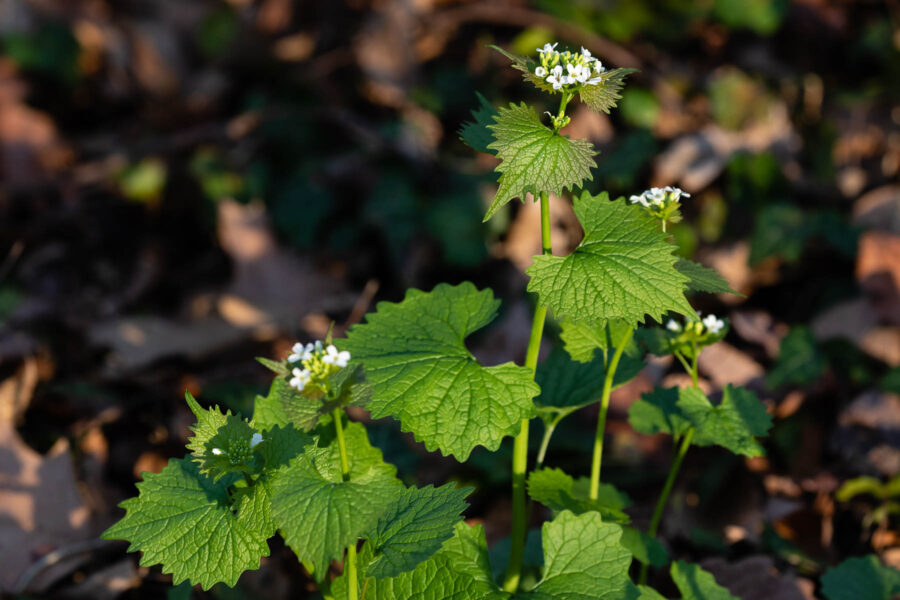Garlic mustard doesn’t belong in our forests but is fine in our kitchens
Invasive garlic mustard is overtaking forest (or forested) ecosystems across North America.

Think of spring in the Chesapeake watershed and what comes to mind is probably images of bluebells, spring beauties and trout lilies blanketing forest floors. The spring ephemerals that we know and love are often the first sign of spring, but they are quickly being replaced by an invasive species.
What is garlic mustard?
Garlic mustard is a leafy green plant that is native to Europe and has become an invasive species in North America. It was brought to North America in the 1800’s for agricultural and medicinal purposes. It is a biennial plant, meaning it takes two years to complete its life cycle. In the first year, it grows to be eight inches tall with a rosette of green leaves. In its second year, it can grow to be three feet tall and develop white flowers and seeds. That second year is when the problems start: as a prolific self-seeder, just one garlic mustard plant can produce hundreds more if it is allowed to get to the flowering stage.
Why is it harmful?
Garlic mustard develops early in the year and can outcompete many native plants for resources. As the garlic mustard grows, it absorbs moisture and nutrients and shades out any emerging plants. It is also an allelopathic, meaning it produces chemicals that can inhibit the growth of other plants and fungi in the soil. Spreading at a rate of 2,500 square miles per year, this plant runs the risk of creating unhealthy forests with very little biodiversity.
How to get rid of it
Once garlic mustard has invaded an area, it is very difficult to control. The best thing to do is to hand pull the plants early in the season before they have started to create seeds. It is important to remove at least half of the root system. It is best to pull the plants after it rains because the soil is easier to work with.
After the plants are removed, place them in a bag to dispose of them with your garbage. The plants should not be composted because the seeds can survive and sprout. In areas with established garlic mustard plants, spraying of herbicides might be the only way to effectively rid the area of the species.
The seeds can remain viable for up to five years so removal techniques will likely need to be repeated for several years. Always remember to clean your shoes after spending time in an area with invasive plants to reduce the chance of spreading the seeds to a new area.
What to do with it
The one redeeming quality of garlic mustard is that it is edible. The plant’s name comes from the similarity in smell between the leaves and garlic. It reminds people of garlic, mustard greens and horseradish. Get out early in the season when the shoots are young and good for cooking. You can use garlic mustard to make pesto, pasta and wraps.
Garlic mustard, like many species in the Brassicaceae family, contains trace amounts of cyanide but chopping, blanching and cooking can all reduce the quantity to completely safe levels. Any time you are practicing foraging, make sure you can positively identify the plant, and avoid places with possible contamination like roadsides and urban areas. If you’re interested in learning to safely forage, consider joining an event like Jug Bay’s annual Great Garlic Mustard Pull.
Maintaining forest health is essential to Chesapeake waterways and now you can help by removing invasive species and eating your greens.

Comments
Great information! Thank you!
Thank you!
Your comment has been received. Before it can be published, the comment will be reviewed by our team to ensure it adheres with our rules of engagement.
Back to recent stories